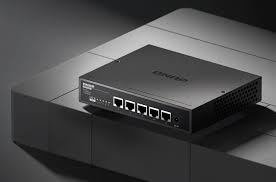IDTechEx Explores the Role of 3D Cu-Cu Hybrid Bonding in Powering Future HPC and AI Product
Semiconductor
packaging has evolved from traditional 1D PCB levels to cutting-edge 3D hybrid
bonding at the wafer level, achieving interconnecting pitches as small as
single micrometers and over 1000 GB/s bandwidth. Key parameters, including
Power, Performance, Area, and Cost, are crucial considerations. Power
efficiency is enhanced through innovative packaging techniques, while
Performance benefits from shorter interconnection pitches. Area requirements
vary for high-performance chips and 3D integration's smaller z-form factor.
Cost reduction strategies involve exploring alternative materials and improving
manufacturing efficiency. In the realm of 3D integration, microbump technology
continues to advance for achieving smaller pitches, with groundbreaking Cu-Cu
connection methods like hybrid bonding leading the way, achieving <1
micron-level pitches. This article introduces Cu-Cu hybrid technology,
including its development, the high-level methodology to achieve it, and key
applications. This article shares some of the research from the IDTechEx
report, "Advanced
Semiconductor Packaging 2024-2034: Forecasts, Technologies, Applications."
Introduction
to microbump and hybrid bonding technology
Microbump technology,
a well-established technology in semiconductor packaging, relies on the Thermal
Compression Bonding (TCB) process and has a widespread application across
various products. Its evolutionary path primarily revolves around continually
scaling bumping pitch. However, a significant hurdle arises as the shrinking
solder ball sizes lead to heightened formation of Intermetallic Compounds
(IMCs), consequently compromising conductivity and mechanical properties.
Moreover, the proximity of contact gaps may induce solder ball bridging during
reflow, posing a risk of chip failure. Since solder and IMCs exhibit higher
resistivity than copper, their utilization in high-performance component
packaging encounters limitations.
On the other hand,
hybrid bonding presents a paradigm shift by establishing interconnections
through a combination of dielectric material (for example, SiO2 or SiCN) and
embedded metal (Cu). Notably, Cu-Cu hybrid bonding has achieved pitches below
10 micrometers, typically around single-digit µm values. This advancement
brings forth several benefits, including expanded I/O, heightened bandwidth,
improved 3D vertical stacking, enhanced power efficiency, and reduced
parasitics and thermal resistance attributed to the absence of underfill.
However, challenges persist in the form of manufacturing complexities and
elevated costs associated with this advanced technique.
Three
ways of Cu-Cu hybrid bonding
There are three
primary methods for achieving hybrid bonding: die-to-die (D2D), die-to-wafer
(D2W), and wafer-to-wafer (W2W). Each approach offers distinct advantages and
disadvantages, influencing its suitability for various applications.
Die-to-Die bonding
offers the highest assembly yield since both dies can undergo individual
testing before bonding. This method also provides the highest design
flexibility. However, it suffers from very low throughput and presents
significant challenges during the process, particularly regarding edge effects,
contamination, and particles introduced during singulation. Additionally,
die-to-die bonding requires pick & place equipment with exceptionally high
accuracy. Due to these manufacturing challenges and low throughput, this method
currently has limited commercial use in hybrid bonding applications.
Wafer-to-wafer bonding stands out for
its highest throughput, which is crucial in the semiconductor industry. Its
process steps are simpler compared to die-to-die bonding, as it eliminates the
need for cutting dies and pick and place procedures. However, wafer-to-wafer
bonding may result in lower yield and reduced design flexibility, as the top
and bottom dies must be the same size. Despite these drawbacks, wafer-to-wafer
bonding remains the most commonly employed approach for Cu-Cu hybrid bonding in
current commercial applications.
Die-to-wafer bonding
occupies a middle ground between die-to-die and wafer-to-wafer methods. This
approach provides higher design flexibility and yield compared to
wafer-to-wafer bonding. However, it faces challenges related to lower
throughput and more complex processing requirements. Despite these challenges,
die-to-wafer bonding has gained momentum due to its ability to strike a balance
between design flexibility and manufacturing efficiency.
Overall, the choice
of hybrid bonding method depends on factors such as assembly yield
requirements, design flexibility, throughput considerations, and processing
challenges. Each approach offers distinct trade-offs, shaping its applicability
in semiconductor packaging and integration.
How
hybrid bonding is implemented in HPC chips
The most prominent
adoption of hybrid bonding is AMD employing TSMC's 3D SOIC (hybrid bonding)
technology for stacking L3 cache die onto a computing chip in two product
lines: the consumer AMD Ryzen 7000X3D CPU for desktops (incl. AMD Ryzen™ 9
7950X3D and AMD Ryzen 7 5800X3D) and the EPYC processor for high-performance
computing (HPC). AMD emphasizes hybrid bonding's role in surpassing their power
efficiency goals with chiplet and 3D-enabled architecture. They highlight its
superiority over micro bump 3D technology, citing 15 times higher interconnect
density and 3 times greater energy efficiency. Other examples include
Graphcore's Bow Intelligence Processing Unit (BOW) is the world's first 3D
Wafer-on-Wafer (WoW) processor, utilizing TSMC 7 nm technology and TSMC 3D SoIC
technology for a 3D die, featuring 1,472 IPU-Core tiles with 900MB of
in-processor memory, offering up to 40% faster AI performance and 16% better
performance-per-Watt compared to its 2D predecessor. Another key example is the
utilization of hybrid bonding in high-bandwidth memory (HBM). Major players in
the HBM market, such as SK Hynix, Samsung, and Micron, are increasingly
exploring hybrid bonding for their applications. While microbump stacking has
been the traditional method in HBM, the growing demand for enhanced bandwidth
expansion and power efficiency is driving the active investigation of hybrid
bonding. The commercialization of hybrid bonding-based HBMs is expected in the
next generation or thereafter, offering a substantial competitive advantage
over microbump-based alternatives. This provides these competitors with a
strong edge against the current market leader.
Summary
Hybrid bonding is
poised to revolutionize the landscape of future HPC and AI products, offering a
host of advantages that will shape the industry's path forward. As technology
advances and demands for increased computing power and efficiency continue to
surge, hybrid bonding emerges as a key enabler for meeting these evolving
needs.
The IDTechEx report,
"Advanced Semiconductor Packaging 2024-2034: Forecasts, Technologies,
Applications", delves into the dynamic landscape of 2.5D and 3D
semiconductor packaging, analyzing technology trends, industry barriers, and
market forecasts across AI, HPC, 5G/6G, autonomous vehicles, and consumer
electronics sectors. With unbiased analysis and detailed market evaluations,
this report provides a comprehensive understanding of the industry's future,
making it essential reading for stakeholders navigating the evolving
semiconductor landscape.
To find out more
about the "Advanced Semiconductor Packaging 2024-2034: Forecasts,
Technologies, Applications" report, including downloadable sample pages,
please visit www.IDTechEx.com/ASP.
For a deeper
understanding of materials and processing in Cu-Cu hybrid bonding, refer to
IDTechEx's related report, "Materials and Processing for Advanced
Semiconductor Packaging 2024-2034". This report offers valuable insights
into manufacturing processes, material selection, and successful case studies,
aiding stakeholders in achieving optimal outcomes.


































Leave A Comment